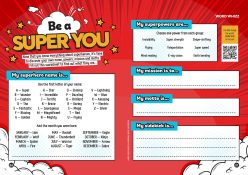Consider this your guide to managing constipation in children.
Children experiencing constipation may not always have the vocabulary to express their discomfort, making it difficult to communicate their inability to pass stools normally.
Dr Suveena Bisetty, a specialist paediatric gastroenterologist practising at Netcare St Augustine’s Hospital in KwaZulu-Natal, shares how children may display symptoms of constipation and when it is necessary to seek medical attention.
“For most children, constipation is usually self-limiting and should resolve itself without the need for medication. However, parents need to be aware that if a child has prolonged constipation that is left untreated, it can lead to the development of other problems,” she advises.
Parents should watch for the following signs, which may indicate their child is having difficulties with bowel movements:
- Crossing ankles or legs
- Stiffening the body
- Attempting to hide during defacation
- Crying or sweating on the toilet
- Pushing against walls, the floor or objects when trying to pass a stool
“The child may experience abdominal pain and could pass overflow diarrhoea even though they are constipated, as some of the stool manages to move past solid waste remaining in the bowel,” Dr Bisetty says.
The Paris Consensus on Childhood Constipation Terminology (PACCT) defines constipation as a period of eight weeks with at least two of the following symptoms:
- defecation frequency less than three times
- faecal incontinence frequency greater than 2 once per week
- passage of large stools that clog the toilet
- palpable abdominal or rectal faecal mass
- stool-withholding behaviour
- painful defecation.
The Bristol Stool Chart is a clinical assessment tool that describes the shape and consistency of stools —from type 1 ‘very constipated’ to type 7 ‘diarrhoea’. Dr Bisetty says that constipation may be type 1, which is described as separate hard ‘lumps, pebbles, ribbons or nuts that are difficult to pass’ or type 2, slightly constipated, where the stool forms a sausage shape with large lumps.
“If constipation persists, parents must consult their child’s paediatrician or healthcare practitioner to establish the cause and resolve or manage it. If left untreated, the child could develop haemorrhoids, or piles, as the perianal veins become damaged and engorged, and this may lead to bleeding.”
She says that other potential impacts of severe constipation could include faecal impaction, where the bowel may become obstructed, which often presents with vomiting. Faecal incontinence or encopresis may also occur, where the child loses control of their bowel movements, often resulting in soiling of the underwear or ‘accidents’.
Ensure your child eats more fibre and drinks more water and has less than 500ml of dairy products per day
Common causes of constipation
“Constipation has numerous causes across all age groups. Establishing the root cause of persisting constipation is essential to treating it correctly,” Dr Bisetty says.
► Motility causes relating to stool movement may include dietary aspects, such as not enough fibre and/or water or a food protein intolerance. It could also be a sign of irritable bowel syndrome, colonic inertia, pelvic floor disorders or Hirschprung’s disease (a congenital condition where the colon’s muscles do not function normally, causing problems with passing stool).
► Metabolic causes include diabetes, chronic kidney disease, high calcium intake (which is more common with supplements in paediatric patients), low potassium levels, hypothyroidism and hyperparathyroidism.
► Neurogenic causes relating to the nerves may include multiple sclerosis, spinal cord injury or pathology from birth, stroke, neuropathy or myopathy in children with cerebral palsy.
► Some medications may have constipation as a side effect – these include opioids that contain codeine, anti-inflammatories and certain cough syrups, iron or calcium supplements, some antidepressants or mood stabilisers and diuretics. Chronic laxative use is also a risk factor.
► Mechanical factors affecting the gastrointestinal tract are less common in children.
► Other causes of constipation may include autoimmune conditions such as scleroderma, a connective tissue disease; coeliac disease, a chronic autoimmune disorder where the ingestion of gluten leads to damage in the small intestine; food allergies; a split in the lining of the anus, known as an anal fissure; or psychological factors.
When to seek help
“It is imperative to seek medical attention for any of the complications described above, as well as in any of the below instances,” Dr Bisetty says.
- Symptoms of constipation from birth or in the first few weeks of life.
- The newborn does not pass stool or has delayed stool from 72 hours old.
- If a child has to miss school due to constipation and related discomfort.
- Ribbon-like stools.
- Leg weakness or locomotor movement delay.
- Abdominal distension (stomach extending from the body) with vomiting.
- Abnormal appearance of the anus.
“In some cases, children’s constipation may require radiological investigation to exclude other potential underlying diseases, and your doctor may order blood tests and a stool sample for analysis.”
Return to regularity
Dr Bisetty says that treatment of constipation is multifactorial, and that diet is a crucial component. “Parents should ensure the child eats more fibre and drinks more water, and they should have less than 500ml of dairy products per day. The child should not have processed foods and eat more vegetables and less red meat.
“Parents should encourage good toilet habits and teach children that their knees need to be above the level of their hips, with no pushing or straining when passing stools. If needed, they may require the assistance of a pelvic floor physiotherapist,” she adds
By: MNA on behalf of Netcare St Augustine’s Hospital
Photography by: Shutterstock
Text courtesy of Club magazine







